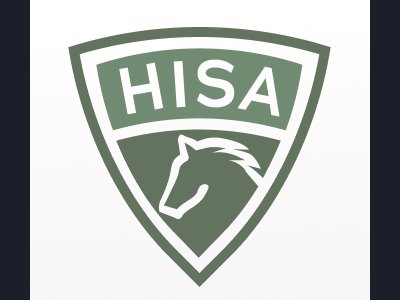HISA Hosts Webinar on Changes to Go Into Effect July 8


The Horseracing Integrity and Safety Authority hosted a webinar July 1 discussing rule changes that go into effect July 8.
HISA CEO Lisa Lazarus led the panel and was joined by HISA director of racetrack safety Ann McGovern, director of stewarding and state racing commission relations Marc Guilfoil, and veterinarian Dr. Shari Silverman.
Silverman discussed a variety of changes to stand-down times and other medical rules.
Under current HISA rules, a horse that receives an intra-articular injection to any joint on the limbs has a seven-day stand-down for workouts and a 14-day stand-down for racing. Polyacrylamide hydrogels are an exception that requires a seven-day stand-down to work and 180-day stand-down to race.
Starting July 8, whenever corticosteroids are administered to the fetlocks, there will be a 14-day stand-down for works and 30-day stand-down for racing. All other types will remain the same. Horses that receive these injections prior to July 8 will follow the original rule.
Stand-down times were also changed for shockwave therapy, which currently requires 30 days for both workouts and racing. The new rule will reduce the workout stand-down to 14 days while it remains 30 days for racing.
Also on July 8, any medical therapeutic devices that have an external power source (battery or needs to be plugged in) will be prohibited within 48 hours of a race or a work to be removed from the vets' list. Any type of acupuncture is also prohibited during those 48 hours.
For horses who have had an extended absence from racing, HISA will require a 150-day layoff report. July 8 will act as day one of the layoff for these reports.
"If a horse hasn't raced in an extended period of time—let's say on July 7 it's day 149—on July 8, as far as HISA is concerned, it's going to be day one," Silverman said. "We're not expecting layoff reports to be uploaded onto the portal for these horses until Dec. 5."
Those in racing jurisdictions that require 120-day or 150-day layoff reports will still need to submit them in the interim.
Changes to Claiming Rules
Starting July 8, a second waiver claiming option will be available to connections of covered horses that have not started in 120 days.
Connections can declare the horse ineligible for claim for up to two races after their layoff. To meet these conditions, the horse must have raced for a claiming price in its last start and be entered into a claiming race with a price equal to or greater than the price it last started.
The second race option will only be available if the waiver was used in the first race off the layoff. Using the first-race waiver and not the second-race waiver will not transfer the waiver to the third race. In addition, the second race waiver will not be eligible should the horse win the first race or changes majority ownership after the first race.

Some additions and changes were also made to the voided claim rule, which Guilfoil believes is one of the most important rules in HISA.
"I think it's a horse welfare rule that really takes care of the horse," Guilfoil said.
Claimants will now have the opportunity to void their claim within two business days of being notified that the horse had a positive drug test in the race from which it was claimed. Once the claimant receives notice from the Horseracing and Integrity Welfare Unit, they can contact the stewards and give their intent to void the claim.
"In Kentucky, we've had that rule for several years and there's never been a reasonable claim out there that they couldn't work out between the two parties," Guilfoil said.
The claim will not be voided if the claimant has started a horse in another race or if the claimant fails to take due care with or made material alterations to the horse, such as castration or if the horse dies or has been euthanized in their care.
Claimants can fill out a form to receive a notification when the test results have been received, which Guilfoil estimated at about 10 days.
"I would advise if you are going to race this horse back in a short period of time, when you claim it go ahead and fill that form out," Guilfoil said.
Claims can also be voided on race day should one of the following occur before being released to the claimant, which is when they leave the test barn: the horse dies or is euthanized, is vanned off the track and placed on the vets' list for bleeding from the nostrils (epistaxis), or is unsound or lame.
Once released from the test barn, the horse is claimed, with the only way to void that claim being if they failed the drug test.
The minimum time a horse must remain in the test barn was also clarified, which the panel said to be at least 30 minutes. However, veterinarians are allowed to keep them longer.
"These rules, the tweaks and some of the changes in the rules, were direct feedback from you (people in the industry), so we do listen," said Guilfoil. "We change regulations when they make sense. ... If there need to be more revisions that somebody comes up with, feel free to contact us at any time."
